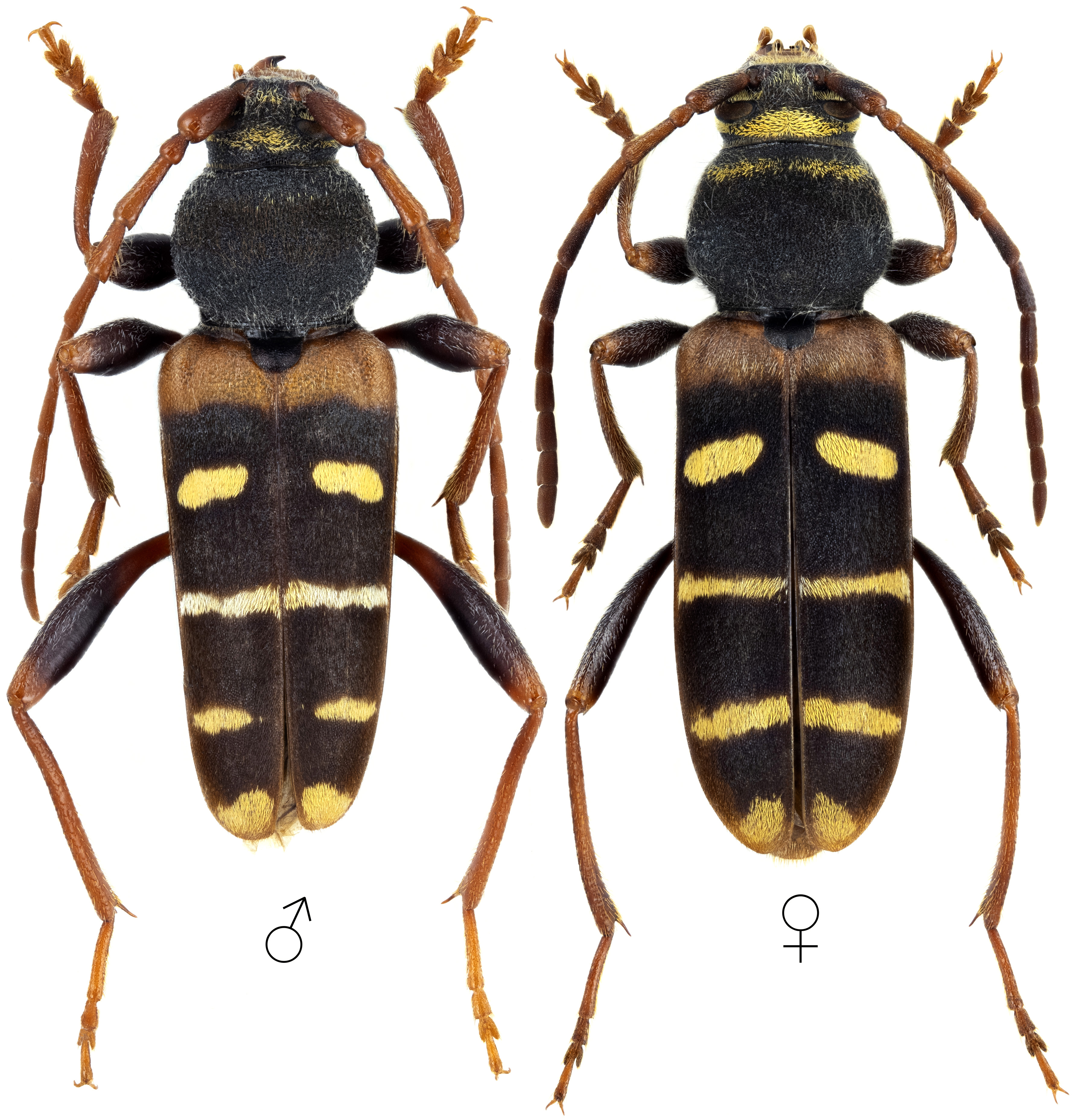[= Clytus (Plagionotus) Christophi Kraatz, 1879]
Subfamilia: CERAMBYCINAE / Tribus: CLYTINI

[Photo © David Navrátil, click on the picture for 4K resolution]
Plagionotus christophi, an East-Palaearctic forest species occuring in Russian Far East, China, Japan and Korea, has been described from Amur river valley (Russian far East) as Clytus (Plagionotus) Christophi by Gustav Kraatz in 1879 [▽]. Larvae of this beautiful species develop in lower parts of seriously weakened, dying or freshly dead oaks (mainly of small diameters from 6 to 10 cm). Larvae feed subcortically creating longitudinal, rarely transverse, meandering galleries compactly filled with frass from bark and wood. Galleries have very shallow impression on alburnum and deeper impression in the bark. Mature larvae enter the wood, create the hook-shaped pupal cell (longitudinal to trunk) with exit hole at end, filled with frass. Pupation in late spring after the second overwintering. Adults, active from June to August, can be found on the viable host trees [❖].
Body length: 13 - 16 mm Life cycle: 2 years Adults in: June - August Host plant: oaks (Quercus spp.) Distribution: Russian Far East, China, Japan, Korea
The depicted beetles were collected in: ♂ - Arsenyev (Арсе́ньев) environs (Primorsky krai, Far Eastern federal district, Russia) in July 1990; ♀ - Lüeyang County (略阳县; Shaanxi province, China) on June 8-14, 1996.Collected by Robert "Robin" Čermák and Emil Kučera
[▽]
Kraatz G.:
Ueber die Bockkäfer Ost-Sibiriens, namentlich die von Christoph am Amur gesammelten.
Deutsche entomologische Zeitschrift, Berlin 23 (1): 77-117, 1879. [download]
[❖]
Cherepanov A.I.:
Cerambycidae of Northern Asia, Volume 2 - Cerambycinae Part II.
Amerind Publishing, New Delhi: 354pp [pages 174-180], 1988. [download]
| Subfamilia | Cerambycinae Latreille, 1802 |
| Tribus | Clytini Mulsant, 1839 |
| Genus | Plagionotus Latreille, 1829 |
| Species | Plagionotus christophi (Kraatz, 1879) |
